Abstract
The jaw-jerk response was elicited in seven adult male subjects by tapping on the chin in a downward direction. The magnitude of the applied taps was varied subjectively by the operator, and the downward acceleration of the mandible measured by means of a calibrated piezo-electric accelerometer fixed to the lower anterior teeth. The taps were applied during voluntary clenching by the subject, controlled by means of a force transducer placed between upper and lower teeth. The electrical response of masseter and temporal muscles was found to increase both with increasing stimulus strength and with voluntary clenching force. However, only by averaging a number of responses were clear relationships demonstrated, there being other variables, affecting the muscles independently, which it has not been possible to identify and control. It is concluded therefore, that quantitative analysis of the electromyograms of the jaw closing muscles following chin-tap stimuli is not a satisfactory method for testing for abnormality in excitability of the neuromuscular system involved in the jaw-jerk response.
Full text
PDF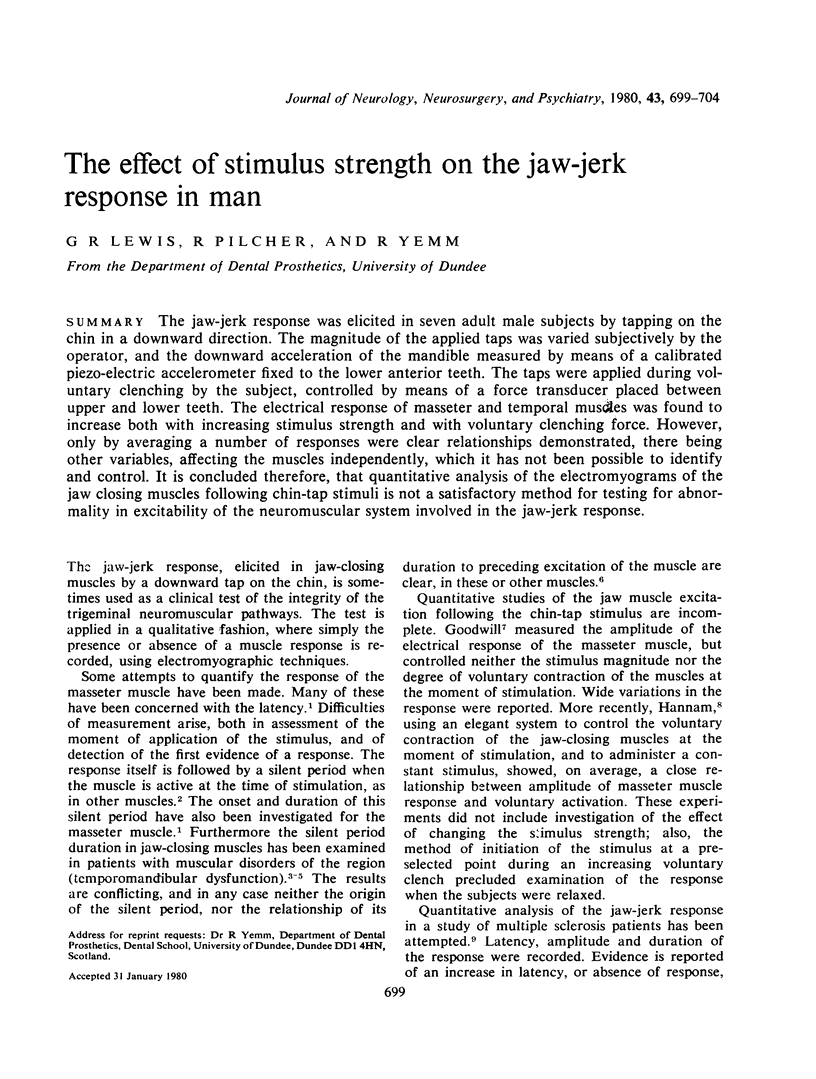
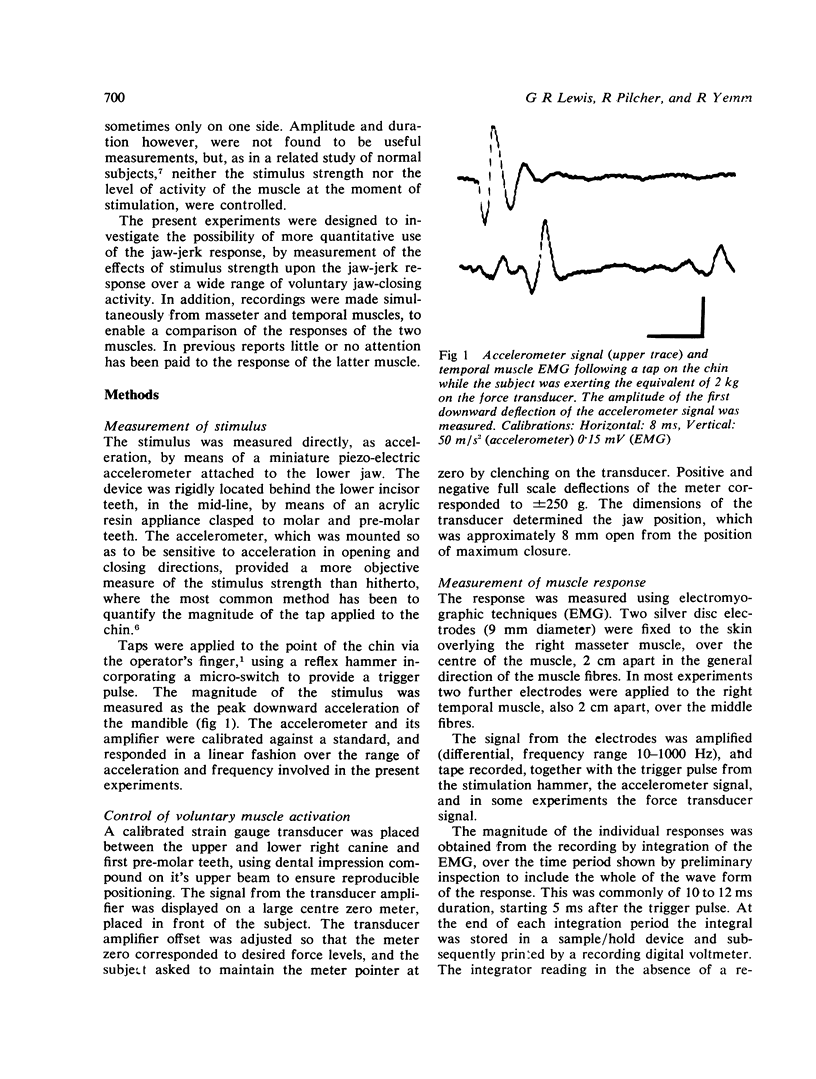
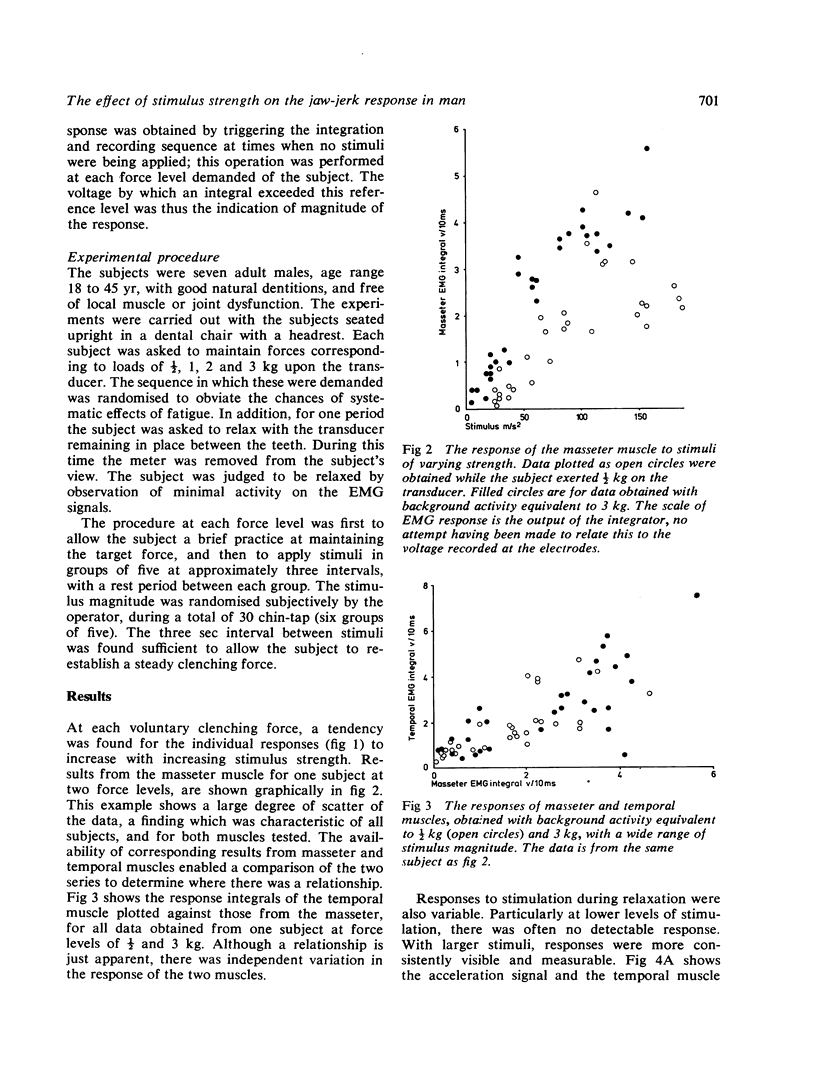
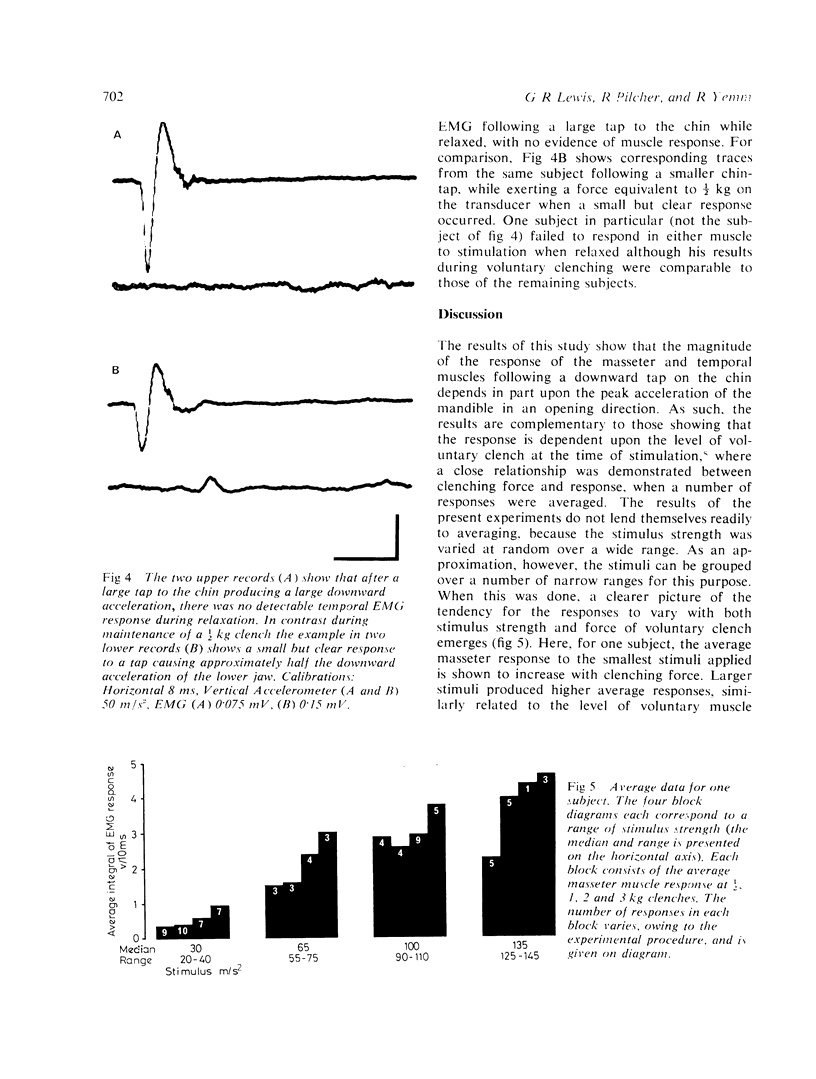
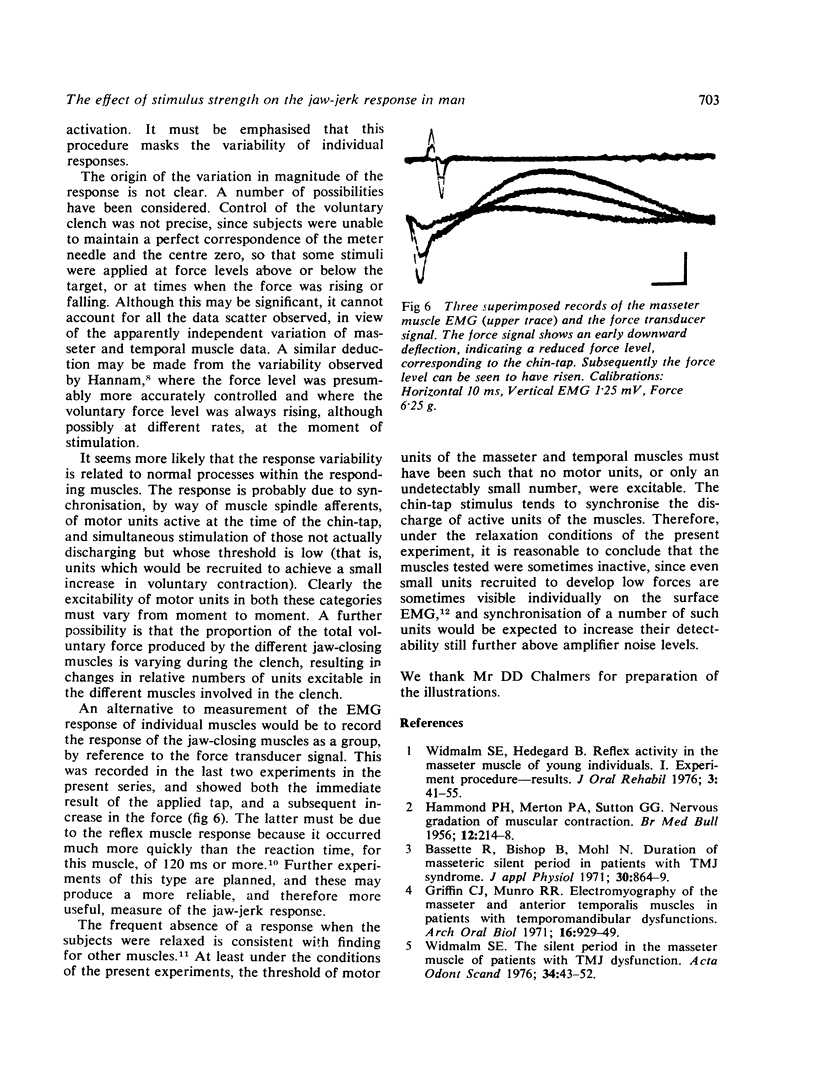
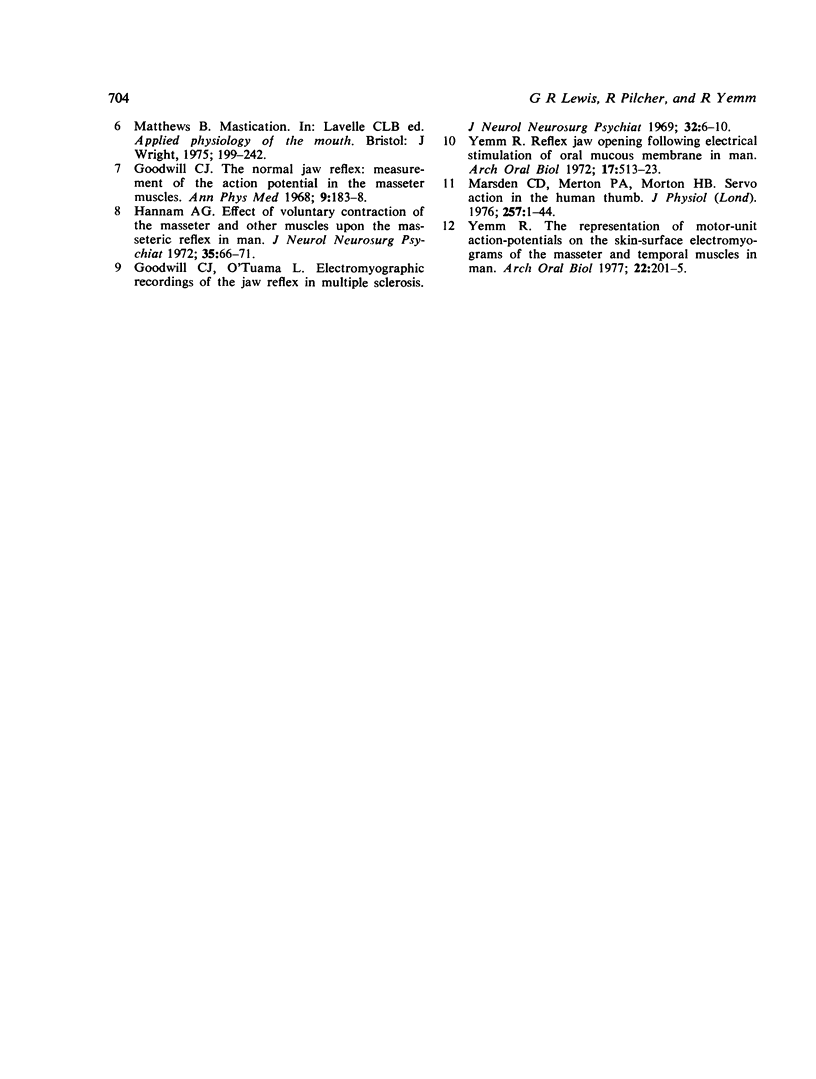
Selected References
These references are in PubMed. This may not be the complete list of references from this article.
- Bessette R., Bishop B., Mohl N. Duration of masseteric silent period in patients with TMJ syndrome. J Appl Physiol. 1971 Jun;30(6):864–869. doi: 10.1152/jappl.1971.30.6.864. [DOI] [PubMed] [Google Scholar]
- Goodwill C. J., O'Tuama L. Electromyographic recording of the jaw reflex in multiple sclerosis. J Neurol Neurosurg Psychiatry. 1969 Feb;32(1):6–10. doi: 10.1136/jnnp.32.1.6. [DOI] [PMC free article] [PubMed] [Google Scholar]
- Goodwill C. J. The normal jaw reflex: measurement of the action potential in the masseter muscles. Ann Phys Med. 1968 Feb;9(5):183–188. doi: 10.1093/rheumatology/9.5.183. [DOI] [PubMed] [Google Scholar]
- Griffin C. J., Munro R. R. Electromyography of the masseter and anterior temporalis muscles in patients with temporomandibular dysfunction. Arch Oral Biol. 1971 Aug;16(8):929–949. doi: 10.1016/0003-9969(71)90182-8. [DOI] [PubMed] [Google Scholar]
- HAMMOND P. H., MERTON P. A., SUTTON G. G. Nervous gradation of muscular contraction. Br Med Bull. 1956 Sep;12(3):214–218. doi: 10.1093/oxfordjournals.bmb.a069553. [DOI] [PubMed] [Google Scholar]
- Hannam A. G. Effect of voluntary contraction of the masseter and other muscles upon the masseteric reflex in man. J Neurol Neurosurg Psychiatry. 1972 Feb;35(1):66–71. doi: 10.1136/jnnp.35.1.66. [DOI] [PMC free article] [PubMed] [Google Scholar]
- Marsden C. D., Merton P. A., Morton H. B. Servo action in the human thumb. J Physiol. 1976 May;257(1):1–44. doi: 10.1113/jphysiol.1976.sp011354. [DOI] [PMC free article] [PubMed] [Google Scholar]
- Widmalm S. E., Hedegard B. Reflex activity in the masseter muscle of young individuals. I. Experimental procedure - results. J Oral Rehabil. 1976 Jan;3(1):41–55. doi: 10.1111/j.1365-2842.1976.tb00928.x. [DOI] [PubMed] [Google Scholar]
- Widmalm S. E. The silent period in the masseter muscle of patients with TMJ dysfunction. Acta Odontol Scand. 1976;34(1):43–52. doi: 10.3109/00016357609026557. [DOI] [PubMed] [Google Scholar]
- Yemm R. Reflex jaw opening following electrical stimulation of oral mucous membrane in man. Arch Oral Biol. 1972 Mar;17(3):513–523. doi: 10.1016/0003-9969(72)90067-2. [DOI] [PubMed] [Google Scholar]
- Yemm R. The representation of motor-unit action-potentials on skin-surface electromyograms of the masseter and temporal muscles in man. Arch Oral Biol. 1977;22(3):201–205. doi: 10.1016/0003-9969(77)90155-8. [DOI] [PubMed] [Google Scholar]


